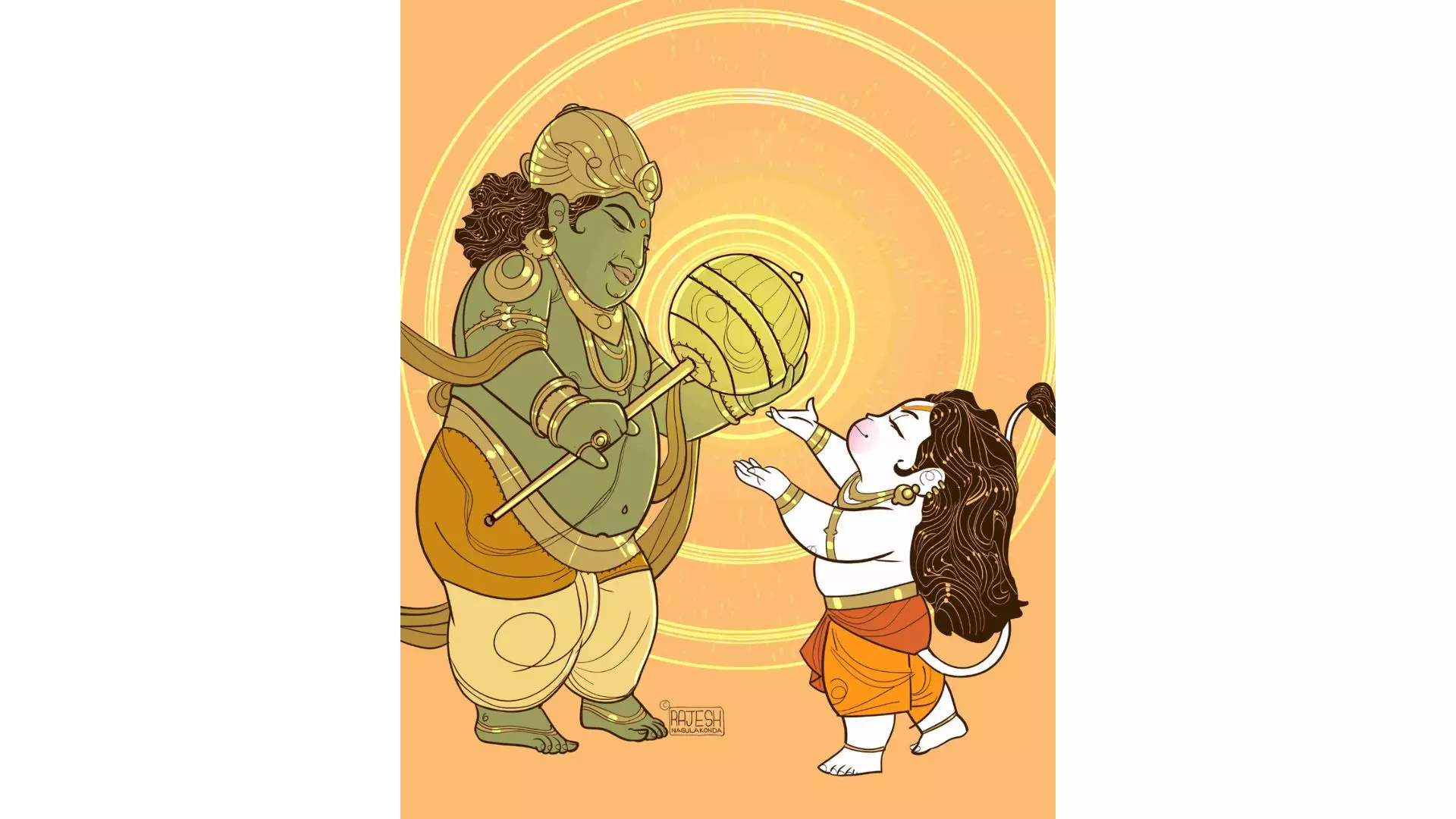Mythological characters in children's books continues to evolve
Indian children's books now blend tradition and tech to reimagine mythological characters, enhancing cultural narratives through AI and art

Hyderabad: The portrayal of mythological characters in Indian children's books has evolved significantly, reflecting cultural shifts and technological advancements. Traditionally, mythological
Early depictions used to be influenced by temple murals, miniature paintings, and folk art, emphasising divinity and grandeur. Raja Ravi Varma, for instance, introduced a more naturalistic approach, blending Indian mythological themes with Western art techniques. His style later became popular in children's literature.
Later, the emergence of Chandamama children magazine and Amar Chitra Katha comics revolutionised the visual representation of mythological figures. These books brought mythology to life with vivid illustrations, simplifying visuals to engage young readers. The characters were portrayed as heroic and larger-than-life, designed to captivate children while maintaining the essence of the stories.
Rajesh Nagulakonda, a senior graphic designer and three-time Comic-con Hyderabad Best Artist winner, shared his journey with mythology-based art. "I began with concept artwork inspired by mythological stories and developed a passion for this genre. I explored original Sanskrit scriptures, and their depth astonished me — time travel, multiple personalities, and characters ranging from thumb-sized to mountain-sized, like Garuda, who is portrayed as a bird as wide as a 30-kilometre wide Vindhya range. Imagine a bird of this size talking to a thumb-sized saint. These stories are grander than any movie," he said.
“My artistic style draws from Indian sculptures, focusing on simple, continuous lines. I minimise intricate details when illustrating for children, using basic shapes to ensure clarity. However, I add subtle details so children can discover new elements with each viewing. While some publishers still rely on content from the 1970s, I focus on refreshing the visuals," he mentioned.
Regarding artificial intelligence (AI), Nagulakonda added, "I’m not using AI at the moment, but I respect those who do. AI can assist with groundwork, saving time for artists. However, I still prefer the satisfaction of creating by hand."
Mehdi Sajid, another graphic artist, emphasised the role of AI in art generation. "AI opens new possibilities in illustration, enabling artists to experiment with diverse styles while preserving cultural integrity. AI tools allow for the personalisation of mythological narratives, adapting them to modern sensibilities. For instance, you can create a cute version of Hanuman, as seen in Anurag Kashyap’s film, or a more powerful version as some artists have done. The key is staying true to the story while updating its presentation."
Sajid also noted that AI, with access to vast data, allows for culturally diverse storytelling. "Tools like DALL·E and MidJourney help with groundwork, like generating 100 images for a graphic novel panel. From those, I refine and redraw the best ones, ensuring originality while avoiding copyright issues or AI hallucinations."
The future of illustrations in children's books, powered by AI, promises to be more inclusive and interactive, offering young readers immersive experiences tailored to their interests, Sajid noted.

